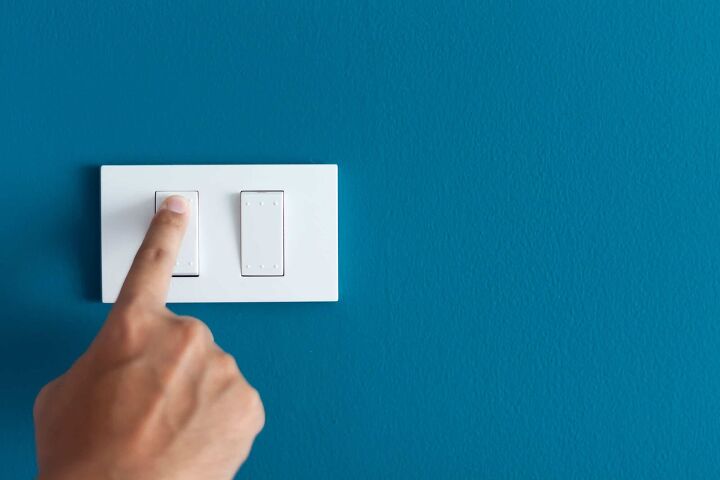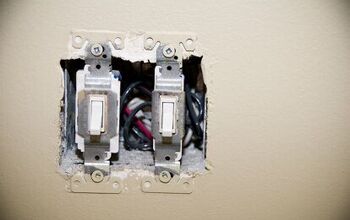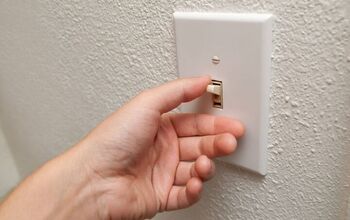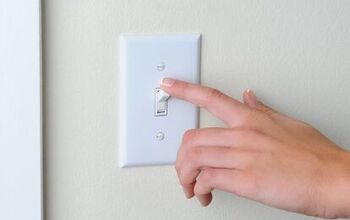Do Light Switches Need To Be Grounded?

Light switches are a major feature in the electrical system of a home. They are located in every room and some rooms have multiple switches. The switches in older homes were not grounded but due to new safety regulations, many new construction homes do have grounded light switches.
Light switches need to be grounded if you are installing a new switch, according to the National Electrical Code (NEC). If you are replacing an existing switch, you do not need to ground the switch. If you install a switch into a grounded metal box, the switch will also be grounded. Whether installing a new switch or replacing, use a nonconducting, noncombustible faceplate.
A grounded light switch provides an additional layer of safety to protect against shocks, electrocution, and fire. It is not necessary for the operation and is why in older homes, was not a requirement.
Do You Need to Hire an Electrician?
Get free, zero-commitment quotes from pro contractors near you.

Toggle Light Switches
Toggle light switches are the kind you most commonly find in homes. These are simple up/down levers that turn the lights on and off. When you flip them up, it completes the circuit and the light goes on, when you flip them down, it stops the circuit.
If you flip the switch with wet hands, having a ground reduces the chances of getting shocked. It may still happen, but the chances are dramatically reduced.
Automatic Light Switches
There are some occupancy-sensing automatic light switches that do need a ground wire. These light switches detect when someone enters a room, turns the lights on, and then turns them off when it detects that no one is there. Automatic switches require a ground connection.
Plastic Box Vs Metal
With a plastic box, there is no need to attach a ground wire to the box. Because they are made of a non-conductive material, switches and outlets cannot short out when coming into contact with the side of the box.
Plastic boxes have tapped screw holes for easy installation of light switches and come in multiple sizes. These allow them to house multiple-gang light switch configurations. There are many types of plastic boxes that you can use, depending on your wall, the material, and what it is housing. Some have nail-on brackets, others are cut-in versions that lock in place when secured to the wall.
The disadvantage of using plastic boxes is that they are not as durable as metal boxes. If during installation a screw or nail is not lined up properly, it could cause the box to resist tightening down and become loose.
Metal boxes on the other hand are very durable and have a higher weight load capacity. This is especially helpful when using boxes for ceiling fixtures. Metal boxes are the common choice for electrical installations, even though plastic junction boxes are usually a little cheaper.
How To Test If Your Lift Switch Is Grounded
How to Ground a Light Switch
In recent years the NEC has made it a requirement that light switches have ground wires. If the light switch is in a metal box, the metal box may be grounded.
On light switches there is a green screw on the upper left side. This is where the ground wire would be connected. When you screw the light switch into the wall, it will make contact with the metal box. As long as the box is grounded, it will pick up the ground through the connection.
If the box isn’t grounded, the light switch will still work, though it won’t provide the safety protection.
Replacing a Light Switch
If you have an old light switch that you want to ground, check for a ground screw. If there is not one, it would be a good idea to replace the switch with a newer model. Most modern light switches cost less than $1.00.
If you must use that light switch, connect the ground wire to the electrical box. This will only work if the electrical box is metal. If not, wrap the ground wire around one of the screws that secures the switch to the box. As long as the bare metal frame makes contact with the ground, the light switch is grounded safely.
Testing for a Ground Connection
To test for a ground connection, you will need a non-contact voltage tester. You will also need a two-lead circuit tester. The non-contact voltage tester will allow you to make sure the power to the switch is off. The two-lead circuit tester will test the wires of the switch.
Step 1: Turning Off the Power
Go to the circuit breaker and turn off the power that controls the wall switch you will be testing. If you haven’t already, now is a good time to label your electrical panel, room by room. This will save you time whenever you need to flip a particular switch.
You can label the circuit breaker using a piece of tape and marker, applying it to the inside of the door panel. Or with a magnetic label that comes in a set.
Step 2: Testing the Voltage Tester
In order to make sure your Voltage Tester works correctly, you will need to test it first. Hold the tip near a lamp cord that is plugged in or a light bulb that is turned on. Check for a pattern of chirps and flashing lights. This will tell you that the tester is working and the batteries do not need to be replaced.
Step 3: Testing the Switch
The first thing you will need to do is remove the switch cover plate. This will allow you to get to the screw terminals. To do so, unscrew the two small screws holding it in place.
Hold the tester ½” from the screw terminals. If there is no alert like there was with the light bulb, unscrew the long screws at both the top and bottom of the switch. These screws are what secure the switch to the switch box. After you unscrew these, pull the switch out of the box and let it hang there while you test the wires.
Step 4: Test the Circuit
To test the ground wires in the wall switch, you will need a two-lead circuit tester. These have a red and a black lead that connects to a body with a small light. For this test, you will need to keep the circuit breaker flipped to the off position.
Unscrew the two switch wires from the terminals and pull them out. Spread the bare ends of the wire apart. Turn on the circuit at the breaker box and using your non-contact voltage tester, find the hot wire.
Once found, touch the hot wire with the red lead, from the two-lead circuit tester. Do not allow the hot wire to touch any part of your body.
Touch the neutral wire with the black lead. If the circuit tester light goes on, the circuit is working. Next, you will touch the hot wire and the ground wire with the leads. If the light once again lights up, then you have a good grounding circuit.
Do You Need to Hire an Electrician?
Get free, zero-commitment quotes from pro contractors near you.

Related Questions
What Happens if I Don’t Connect the Ground Wire?
A switch will work properly without a ground wire. A ground wire is a safety feature and does not affect the function of the switch.
Can I Use Any Screw for Grounding?
The NEC states that a connection can be made by a grounding screw or a listed grounded device. A green hexagonal screw can also be used. These are located on the left side of modern switches.
Which is the Ground Wire in a Light Switch
The ground wire is either green or bade copper. This is why the grounding screw on a light switch is also green.

Sean Jarvis is an interior decorator, writer, and expert handyman. Well versed in everything home improvement, he is a savant at manipulating words and spaces and upgrading everything around him. Sean specializes in writing concise guides about appliance repair and installation, home and lifestyle, and other residential projects.
More by Sean Jarvis



























